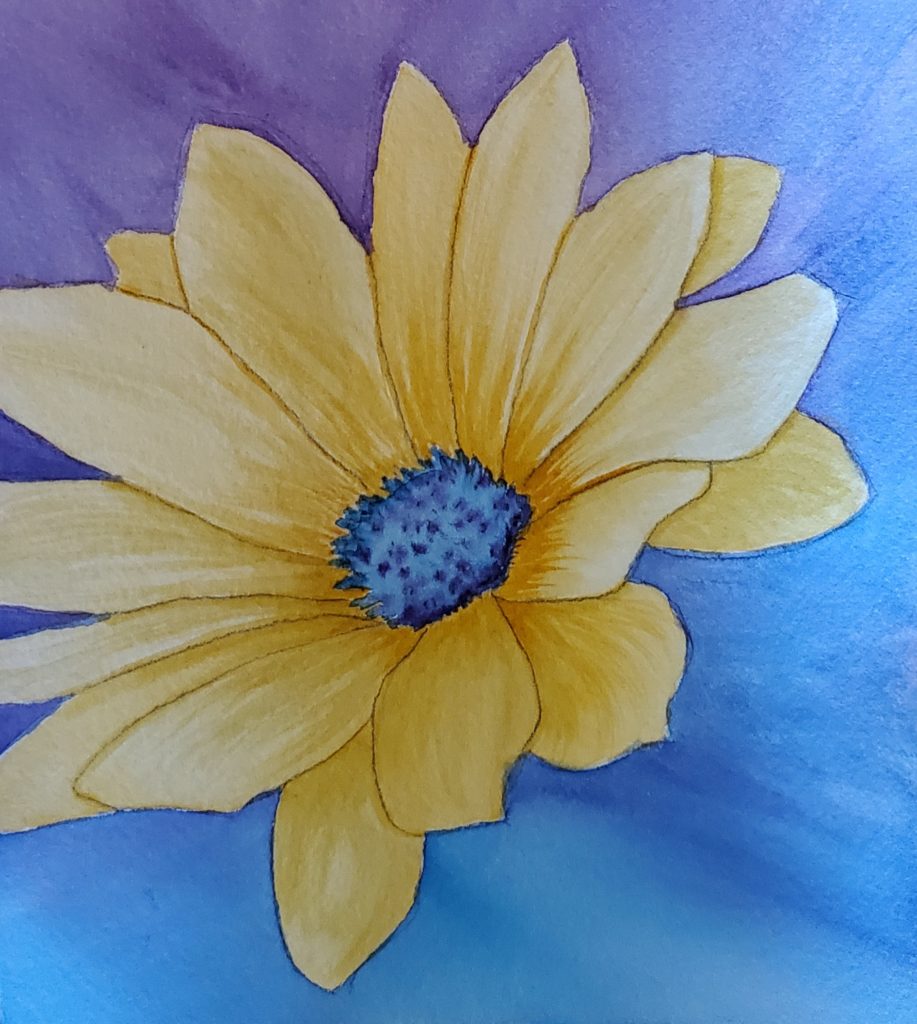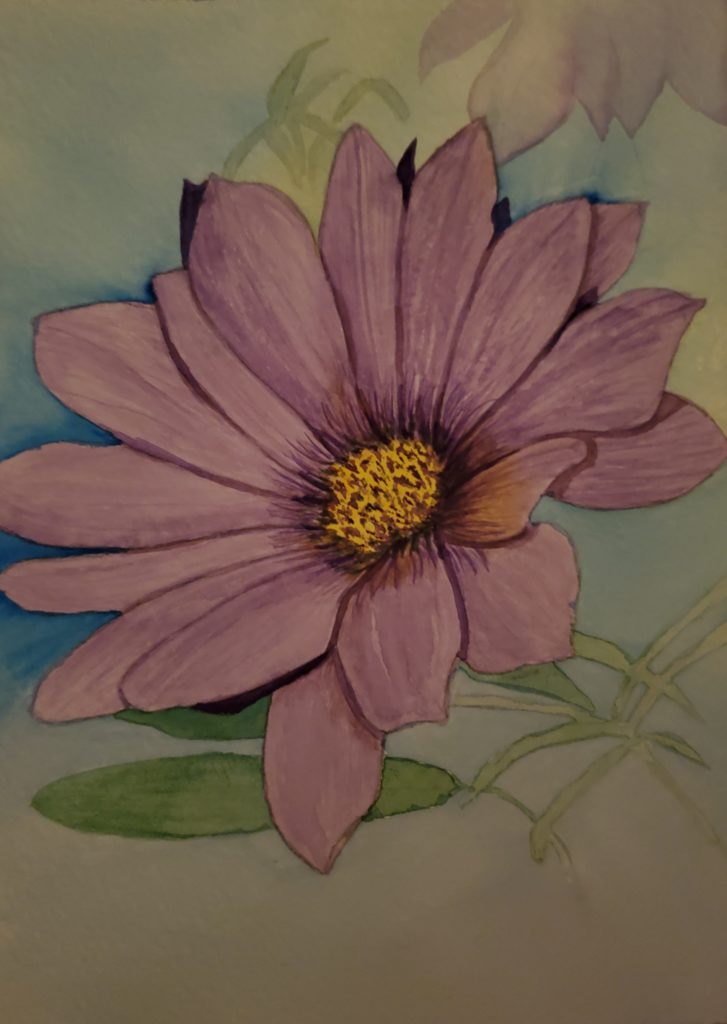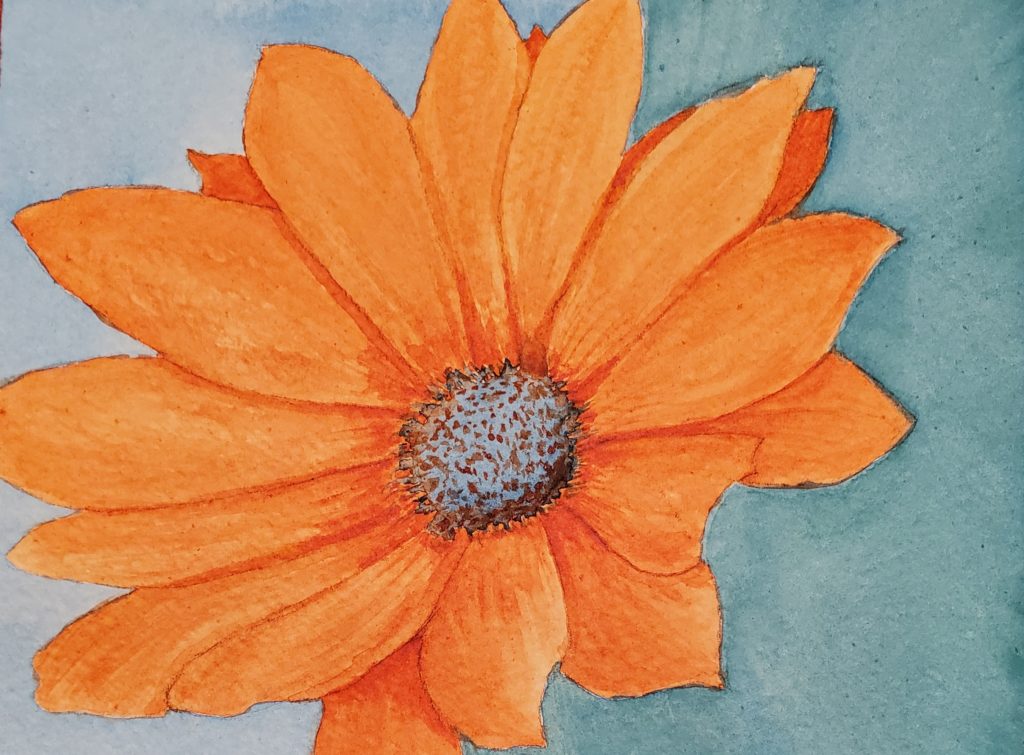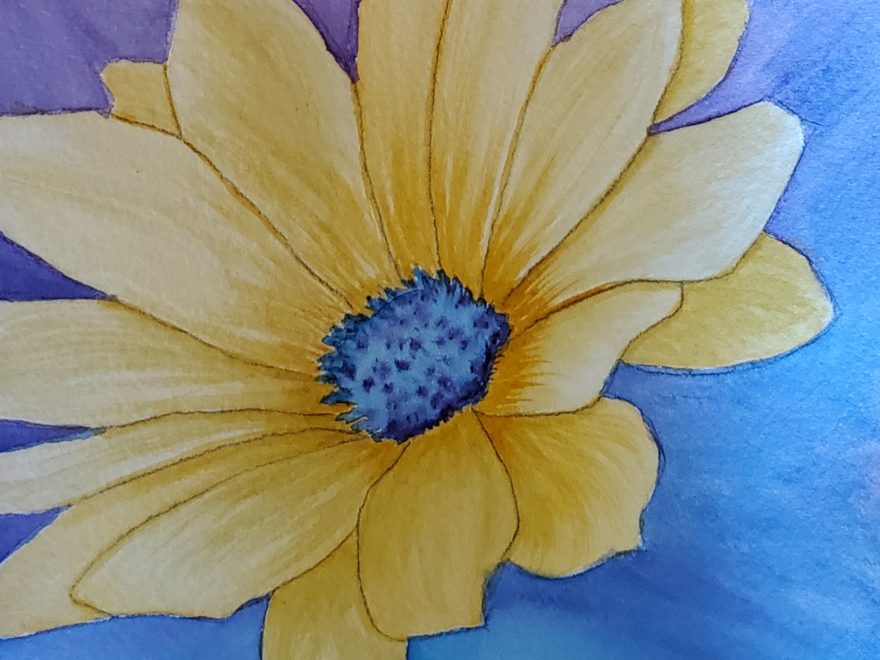Wherever you are, I hope that your New Year has already started off well and that you’ve had some time for activities that you enjoy… and to spend with people you love – even by phone or video-chat. My year started off nicely, driving for an hour on January first to see one of our relatives for a few minutes outside his seniors’ residence. Luckily it was a mild winter day here, with the temperature hovering around the freezing point. It was lovely to see him in person again, even though we all kept our distance and wore proper face-coverings. Then my husband and I drove a bit further to see another relative, with whom we chatted outside on the sidewalk for well over a half-hour.
Neither of these relatives is set up for video calls, so this was really the first time that we had seen either of them in quite a while. They no longer drive so we can’t meet halfway between our homes, and at almost three hours return-trip it’s a long way to go for an in-person chat, so we tend to rely on simple phone calls to keep in touch. But it was a real gift to visit with them in person, to start off the year.
After cancelling all of our holidays plans last year, we decided this time around to at least have my dad over for Christmas dinner; we made it a meal-only get-together, and kept our masks on except when we were eating. It was great to see him for more than a few minutes, instead of just standing outside in front of his home. As a bonus, he loved the surprise painting that I had done for him as a last-minute Christmas gift.
Of course, having someone over for Christmas dinner meant moving all of my watercolour painting supplies off our dining table! Four jars of paint brushes and sketching pencils, 2 containers for water, tubes of paint, palette knives, artists’ tape, scraps of paper, cotton rags, spray bottles, droppers, corrugated art boards, paintings in progress, and more… And my computer, stand, keyboard, and mouse.
Once I got everything squirrelled away, mostly jammed into my closet, I put out a pretty holiday tablecloth. It looked so nice that I decided to leave my art supplies stored away through the holidays. At the start of this week, I spent a few hours pulling everything back out and turning our dining table back into my messy art “studio”. As a reward, I decided to do a small painting right away – a ‘colour study’ of a single flower from my gardens.
A colour study isn’t meant to be framed, it’s more of an informal – maybe even unfinished-looking – painting meant “to explore and test different arrangements of color. It is often done as a lead-up to a more serious painting.”(1) Our gardens are currently buried under a layer of snow, so I painted this flower from one of my nature photos. The photo is a close-up of a grouping of these flowers, and I do want to paint the entire scene this winter; this one flower will be the focal point – the star – of that watercolour.

It was so much fun to paint this first one, using some bright new paint colours that I’d received over the holidays, that I decided to paint the same flower again. This time, though, I used more realistic colours and added a hint of a background. Now I had two completely different versions of the same flower, and liked them both. For some reason the unrealistic and over-bright yellow and blue version of this bloom was really growing on me (pun intended!), and I couldn’t decide which one I preferred.

Unable to pick a favourite, I decided to paint a third version. This time, I’d paint another unnaturally bright flower, to see whether it was the bright colour that was attracting me – like a bee or a butterfly (2) – to the garish yellow and blue of this flower. To be fair, this might be a natural colour combination for flowers somewhere in the world, but it’s not one that I’ve seen in the Montréal area. We definitely don’t have a tropical climate here, so our flowers lack the striking colours of troical plants.
It was easy to pick the next bright colour for this flower, because the awareness colour of my rare disease is orange. After all, I began painting almost a year ago as a form of DIY (do it yourself) movement and brain-plasticity therapy for my Complex Regional Pain Syndrome (CRPS). I’m using art – with the full support of my multidisciplinary medical team – to help manage the multiple symptoms of this autoimmune and neuro-inflammatory condition.

My CRPS struck in 2016, and progressed to the point of a “mild cognitive impairment” in late 2018. At that point I had to step away from a career I adored, in bioethics or biomedical ethics. Along with the since-2016 chronic neuropathic (nerve) pain and joint issues in my right hand/arm, this hand also experiences spasms and tremors, and an extreme sensitivity of the skin. Sometimes even a summer breeze will trigger nerve/neuropathic pain so bad that I’ll vomit or faint, although luckily I can now often stave that off with deep-breathing techniques and movement.
But I consider myself lucky!! CRPS can take years to be diagnosed, leaving people in unexplained and intolerable pain – and getting worse. It took ‘only’ 3 months for my diagnosis; although that seemed intolerably long to me, many people I know have waited decades to be able to put a name to their pain. CRPS usually affects an arm or a leg, but can spread from one limb to another…
In my case, an emergency series of 6 day-surgeries within 2 weeks – starting on the day I was diagnosed with CRPS – stopped my disease from spreading any further up my arm and potentially to my other arm or to my leg(s). The symptoms remained, and the cognitive impairment developed, but it could have been so much worse without those treatment and all the others I’ve had since then.
These days I’m a volunteer patient advocate and patient partner in healthcare research and quality improvement projects (here in Canada with some international collaborations), to the extent that I’m able with my mild cognitive impairment. Not only for CRPS, but also for chronic pain and for rare diseases in general. So… if you’ve read this far, thank you so much for learning about this!
I’d had a lifelong dream or learning to paint, specifically with watercolors, so am thankful that I’m able to do this now… it’s a daily challenge because of both the pain and my brain issues, like forgetting in the middle of a painting which colours I need to mix to make a green (blue and yellow), but it’s fantastic to feel that I’m doing something creative once again.
And then, at the end of last year, I won the inaugural national Art Competition of the Canadian Pain Society. The top prizes were awarded in two categories, one for healthcare professionals (doctors, nurses, physical and other therapists) and one for patients… Each submitted artwork had to represent pain in some way, and be accompanied by a short essay explaining this link between art and pain. My entry won in the patient category.
Now I’m using art for patient advocacy, to raise awareness, and as a way of giving hope to others who are suffering. That’s my story, and part of the story of these three flowers.
As always, thanks so much for stopping by. Feel free to reach out over on Instagram or Twitter, because I’ve had to disable the Comments feature here on the blog. It became too much for me to handle, with my cognitive issues. But I love hearing from you, and am curious to know which flower you prefer – and why! The orange, the purple, or the yellow one?
Keep well, be safe, and take the time today to something that makes YOU feel happy. All the best…
References
(1) Dan Scott. Using Color Studies To Explore And Test Different Color Arrangements. 03 Dec 2018. Draw Paint Academy Pty Ltd. Online. Accessed 06 Jan 2022:
https://drawpaintacademy.com/color-studies/
(2) Marie Iannotti. How to Design a Garden to Attract Butterflies and Hummingbirds. Updated 07 Jun 2021. The Spruce; part of Dotdash Publishing. Online. Accessed 06 Jan 2022:
https://www.thespruce.com/attracting-butterflies-and-hummingbirds-4070277

